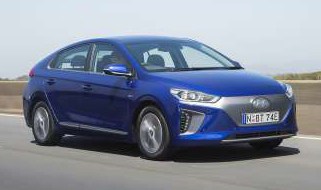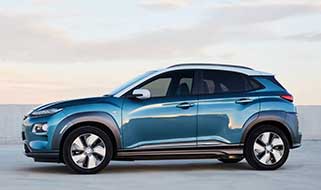It’s 2019, and electric vehicles are finally becoming a thing. At CarTell.tv, prior to this
So are we ready for ELECtrics?
Why doesn't everyone drive an EV?
So what’s the problem then? Why doesn’t everyone drive an EV? Well unfortunately, there are still a few problems. Based on our experience and general feedback when speaking to people about EVs this is what the main sticking points continue to be.

Hyundai IONIQ EV
6hrs 5mins
standard charge (AC)
54min
Quick charge (DC) 100kW
to 80%

Hyundai KONA EV
9hrs 35mins
standard charge (AC)
54min
Quick charge (DC) 100kW
to 80%

Jaguar I-PACE
30hrs +
standard charge (AC)
45min
Quick charge (DC) 100kW
to 80%

Tesla Model 3
10hrs
standard charge (AC)
40min
Tesla Supercharger
to 80%
How do we resolve this sticking point?
So how do we resolve this sticking point? Enter fuel cell electric cars. Or more familiar to us, hydrogen cars. The more we learn about hydrogen cars, the more frustrating it becomes that they aren’t mainstream or readily available yet.

So here are some simple answers to some of the most common hydrogen car related questions. Starting with the title of this blog.

What emissions do hydrogen cars produce?
Water and purified air. And yes, the water omitted is safe to drink.The NEXO also displays how much air it has purified at the end of each journey.
With hydrogen cars will service stations still have a role?
With 7000 service stations around Australia, they can still act as filling stations for hydrogen vehicles. And you might as well grab a coffee while you wait those 3 minutes for the tank to fill.
What can we expect in terms of fuel cell electric and battery electric vehicles from Hyundai in the future?
Hyundai has 44 new eco drive trains coming out between now and 2025.
When will Australian infrastructure be ready for Hydrogen cars?
Scott reckons that by 2025 hydrogen cars will be feasible for regular buyers Australia wide. The ACT is pretty much set up with three charging stations, and the ACT Government is adding 20 Hyundai NEXOs to its fleet.
What is the fueling time for hydrogen cars?
For the NEXO, the charge time is 3 minutes and Toyota’s Hydrogen Mirai is up to 5 minutes. We have heard varying figures for different vehicles, but all seem to be under 10 mins. Just let that sink in – we’ve spent longer at the pump filling up a big tank!
What performs better – battery electric or hydrogen fuel cell vehicles?
Thinking Hyundai in particular, the electric motor in the NEXO is exactly the same as the one used in the KONA EV, and the battery in the NEXO is exactly the same as the one used in the IONIQ EV. The NEXO has a combined 95kW fuel stack with a 40kW battery pack. Hydrogen acts as a feedstock to the fuel cell, which converts the fuel into energy.
Are hydrogen cars safe?
Hydrogen is a dangerous flammable gas like petrol LPG. However, the testing set for hydrogen is a lot more scrupulous than tests applied to petrol vehicles. The same tests would fail if applied to petrol cars. Hydrogen tanks are made from inch thick carbon fiber. The tank security and integrity in hydrogen is far better. Simple answer, YES. Hydrogen can be considered safer than petrol.








